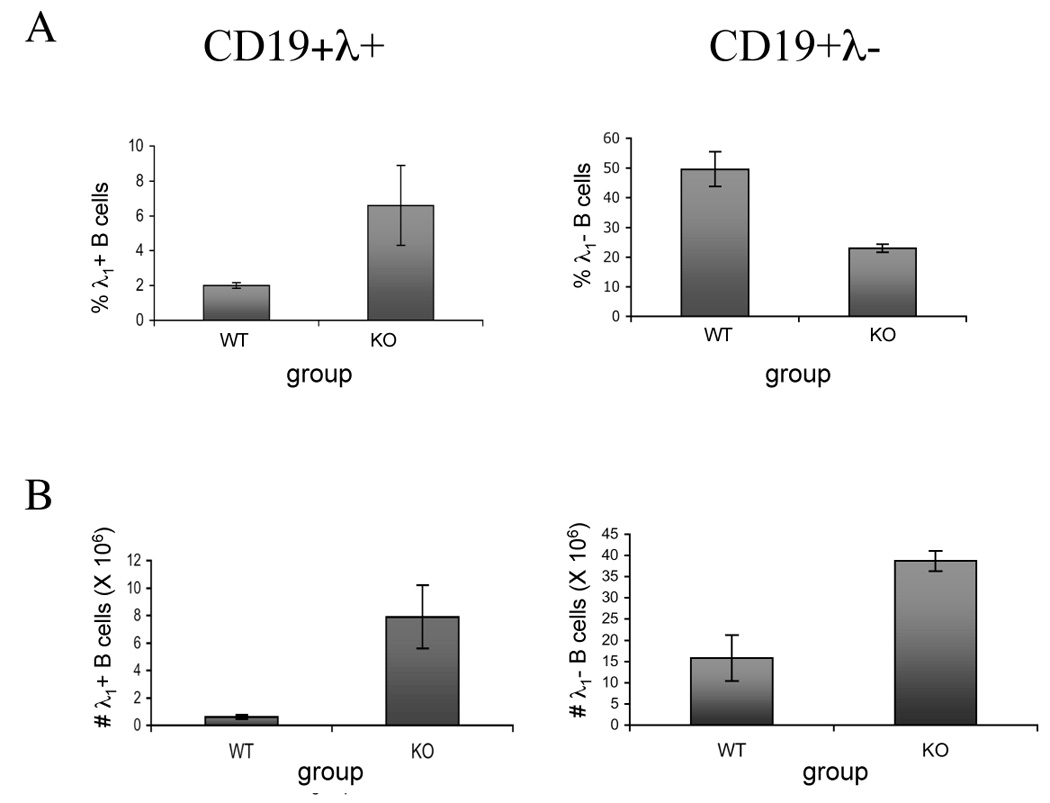Figure 1.

Influence of IL-2 deficiency on the frequency and number of anti-dsDNA B cells in VH3H9-KI mice. The frequency (A) and total number (B) of anti-dsDNA-producing B cells (CD19+λ1+), and all other (CD19+λ1−) B cells in spleens of VH3H9/IL-2 WT (WT) or 3H9/IL-2 KO (KO) mice were determined by flow cytometry. The frequencies shown in (A) represent the percentages of CD19+λ1+ or CD19+λ1− cells within the total splenocyte population. The results shown are the average ± SD of 3 mice per group in a single experiment, and are representative of 3 experiments in mice 10–16 weeks of age. The frequencies of T cells expressing the transgenic TCR in these mice were as follows: VH3H9/IL-2 WT 20 ± 1%; VH3H9/IL-2 KO 20 ± 4%. Statistical differences were as follows for 3 pooled experiments (n=8): %λ+ B cells, p=0.04; %λ− B cells, p=NS; #λ+ B cells, p=0.0001; #λ− B cells, p=0.04.
